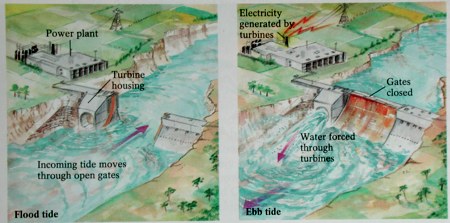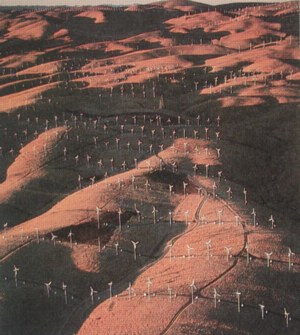| Renewable Energy Sources |
|
|
|
Tidal power. In coastal areas with a high tidal range energy from rising and falling water levels can be harnessed by building a dam across a narrow bay or inlet. The world's largest tide-powered plant, the Rance River project in France, provides virtually all the electricity used by the French province of Brittany. |
|
 |
|
| Hydropower: The main problem here is that when a river system is modified by a dam, unforeseen side effects can occur. Moreover, the reservoir behind the dam is a temporary feature, destined to become filled with sediment. The useful life of expectancy for most large reservoirs in only 100 to 200 years so this source of energy is in reality limited. |
|
 |
|
|
| Wind power is a clean, renewable, nonpolluting energy source that has long been in use to propel boats, and power windmills to pump groundwater and power sawmills and flour mills for centuries. The drawbacks is that wind power is at the moment not cost-effective on a large scale, it is quite limited to region of strong and consistent wind, and it has a rather negative impact on the landscape without mentioning the noise.
Picture on the right: the wind farm of Altamont Pass (california).
|
|
|
| Biomass: In developing countries as much as 35% of the energy used for cooking and eating comes from burning wood and animal dung. These fuels are known collectively as biomass fuels. Biomass is a renewable resource. Although trees grow slowly, continuous planting and harvesting can produce a steady supply. Biomass fuels unlike most other renewable energy resources can create air pollution and desertification problems when their use is not planed. |
|
|
|
|
|
|
|
|
|